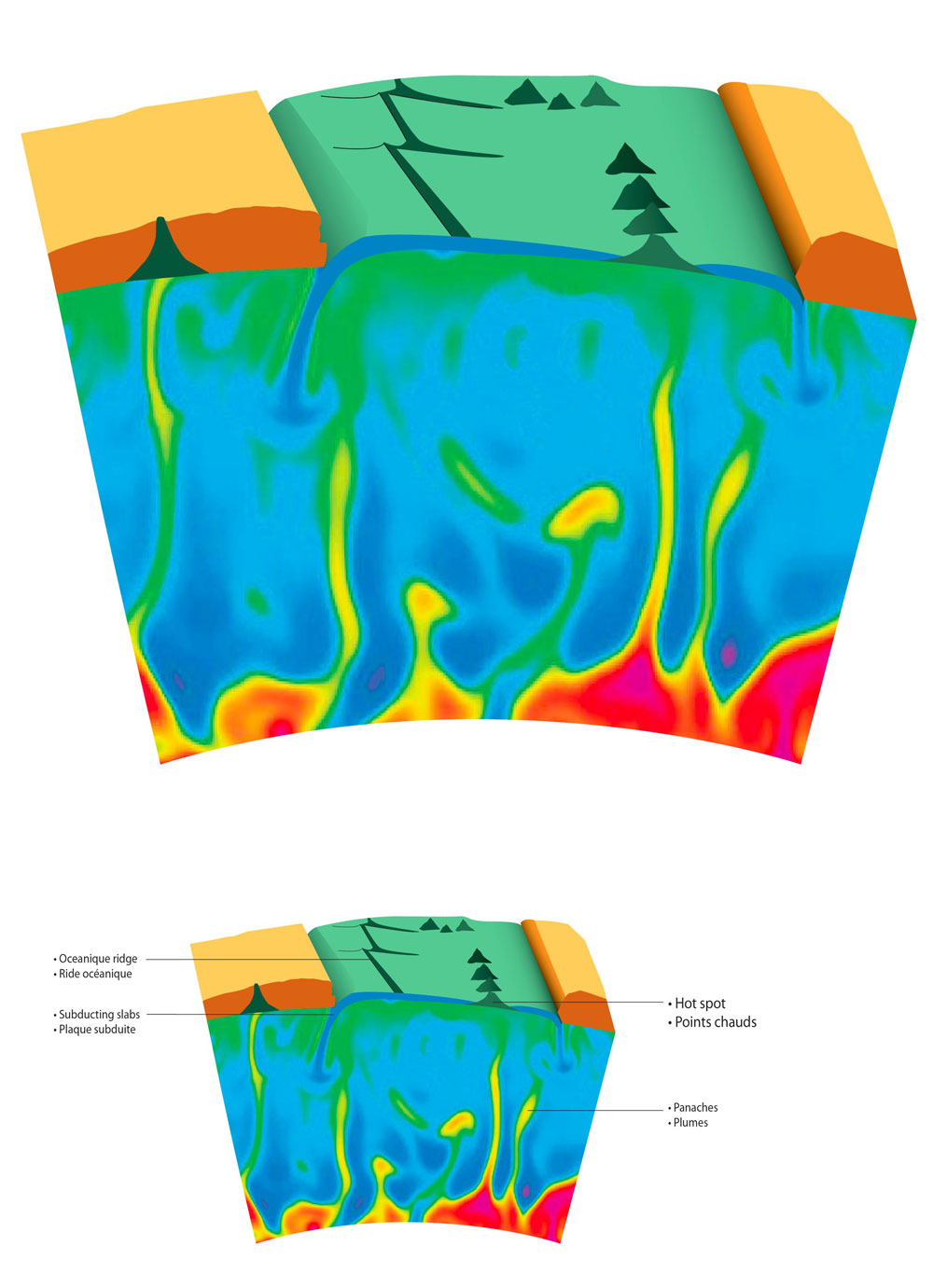
Plumes of Molten Rock Could Drive Biodiversity, Climate Cycles

Giant pillars of hot molten rock from near Earth's core might help drive major cycles in the diversity of life on the planet and the global climate, according to one team of scientists who looked at the connections between these seemingly disparate phenomena.
In recent years, various research teams have uncovered evidence that several kinds of biological and geological events occur in regular cycles of similar lengths.
For example, a prior study of marine fossils discovered the diversity of all these species over the past 540 million years apparently grew and shrank in cycles, one of which was about 62 million years and the other 140 million years long. Other research has uncovered signs of a 140-million-year cycle in long-term fluctuations in global climate, a 59-million-year cycle in sea-level changes and a 56-million-year cycle in how much sediment gets deposited in North America.
"The Earth seems to have a pulse," said Michael Rampino, a geologist at New York University who studied prior research to try to find a connection among these cycles.
Mantle plume cycles
If the 60-million- and 140-million-year biodiversity cycles are real, that makes them much longer than the well-known cycles of fluctuations in Earth's orbit and tilt, which are on the order of millennia. So instead of turning to space for the drivers behind the biodiversity cycles, Rampino and his colleagues looked within the planet itself. One phenomenon they're investigating is mantle plumes — jets of magma that rise from Earth's depths to penetrate overlying material like a blowtorch. [Infographic: Tallest Mountain to Deepest Ocean Trench]
Past research suggests mantle plumes are powerful enough to cause the changes seen in these cycles. For instance, the plumes may play a role in the formation of island chains, such as the Hawaiian Islands. There are signs they also triggered episodes of even more massive volcanic activity, such as one that spewed lava across 580,000 square miles (1.5 million square kilometers) at the Deccan Plateau region (now part of modern-day India) about 65 million years ago, coinciding with the end of the Age of the Dinosaurs.
Sign up for the Live Science daily newsletter now
Get the world’s most fascinating discoveries delivered straight to your inbox.
Now, Rampino and his team suggest mantle plumes might generate these areas of massive volcanic eruptions — known as large igneous provinces — in regular patterns and, in turn, drive biological and geological cycles.
"Most people thought or think that mantle plumes would be sort of random in time," Rampino told OurAmazingPlanet. "This work suggests these plumes are coming up on a regular schedule."
Cycle causes
Other scientists at Carleton University in Ottawa analyzed eruptions from large igneous provinces over the past 250 million years. They found evidence of eruption cycles around the globe with lengths of 62 million and 140 million years, as well as one 35 million years long, especially in the last 135 million years. [50 Amazing Volcano Facts]
"I was quite surprised to find this very clear indication of these regular changes in geological data," Rampino said. "These regular pulsations are probably due to mantle plumes."
As to why these plumes might recur in a cyclical manner, the mantle-plume researchers suspect these jets arise from instabilities in the layer of rock just above the boundary between the Earth's core and mantle layer. These instabilities may reach critical thresholds and cause plumes every 50 million to 100 million years, depending on how long it takes buoyant rock to amass in the lower mantle and become unstable enough to rise.
The cycles might also be caused by the way the tectonic plates making up Earth's surface can dive or subduct under one another. This leads to cold matter accumulating underground, potentially triggering regular avalanches of material from the upper mantle into the lower mantle — which might, in turn, cause matter from the hot, deep mantle to flow upward and set off volcanic eruptions.
Another possibility is that these cycles are rooted in supercontinents such as Pangaea, in which all of Earth's continents were joined as one landmass. A number of different research teams have suggested that supercontinents can act like blankets over the mantle, causing heat to build up, thus leading to hotspots and massive eruptions to occur. This would suggest that supercontinents carry the seeds of their own destruction.
Future research needs to determine whether these volcanic cycles are, indeed, real — or at least not find evidence to disprove them — as well as model how mantle plumes are generated. "Scientists who model what's going on inside the Earth using computer models should see if they can produce the same pulsations we see in the geological record," Rampino said.
Rampino added that although sea level is currently rising and climate is getting warmer, "this has nothing to do with the Earth's internal cycles, which are on a much, much longer time scale."
Rampino and his colleague Andreas Prokoph, of Carleton University in Ottawa, Canada, detailed their findings in the March 19 issue of the journal Eos.
Follow OurAmazingPlanet @OAPlanet, Facebook and Google+. Original article at LiveScience's OurAmazingPlanet.










